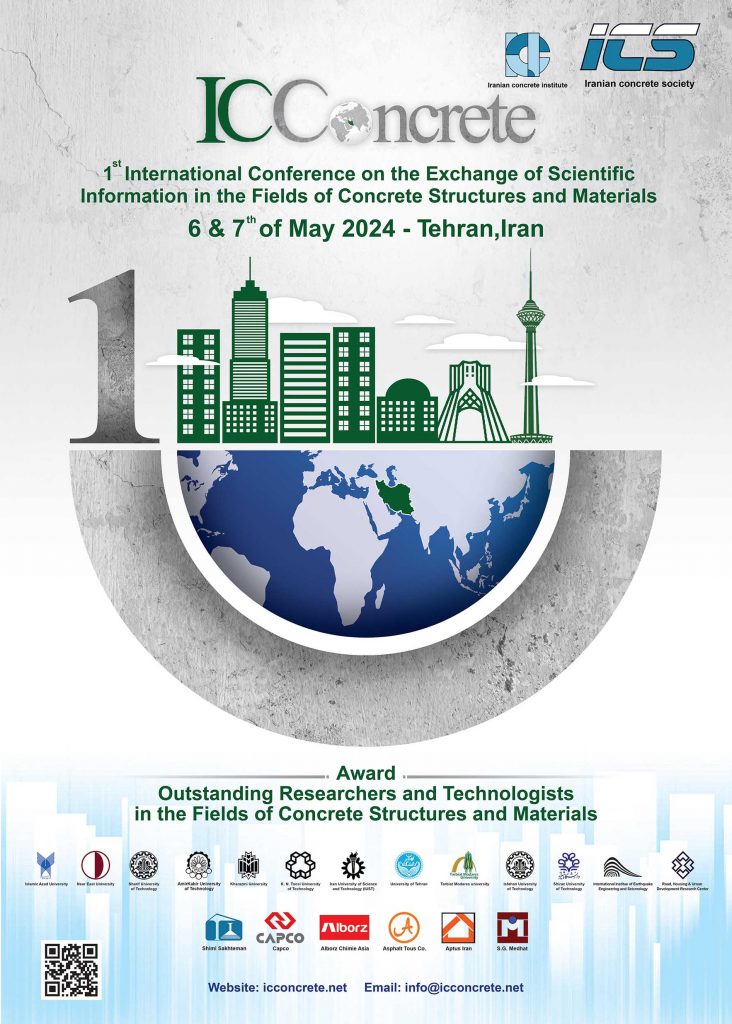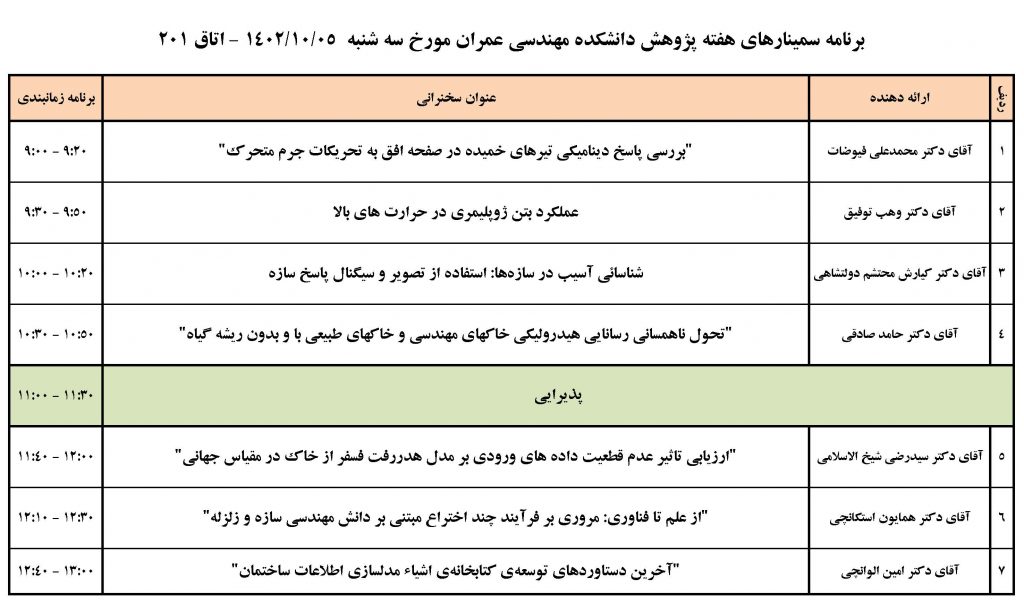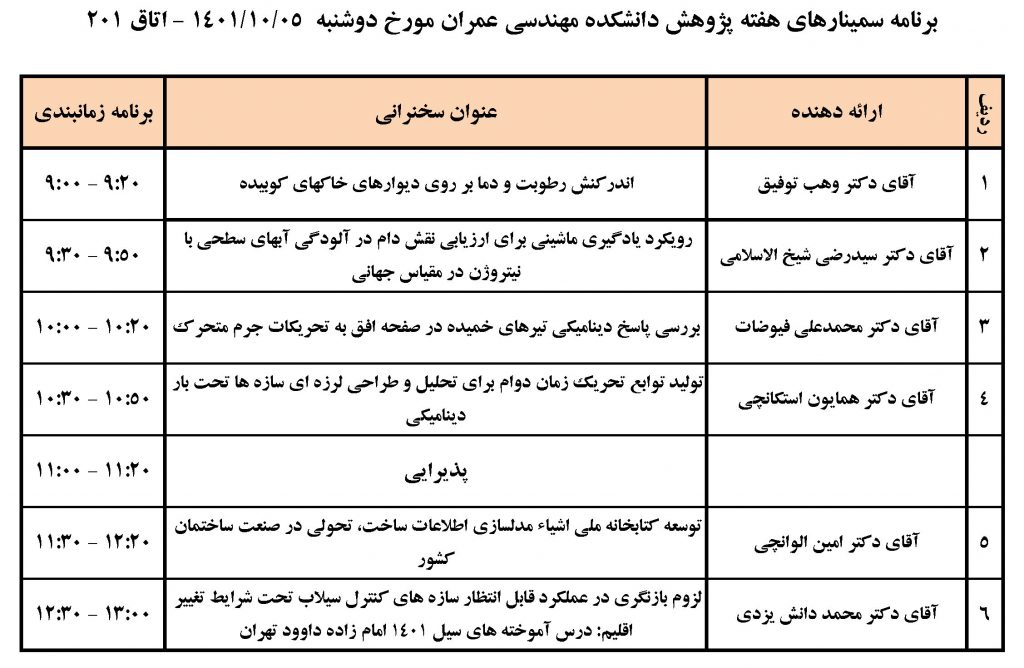

تارنمای معاونت پژوهشی دانشکده مهندسی عمران
تارنمای معاونت پژوهشی دانشکده مهندسی عمران




شرکت برای عموم علاقه مندان آزاد است.
Introducing S-VECD Model Energy-Based Fatigue Failure Criterion and Its Applications to Reclaimed Asphalt Pavement (RAP) Mixtures
دکتر محمدرضا صبوری، دانشکده مهندسی عمران، دانشگاه صنعتی شریف
چهارشنبه 21 آبان 1399، ساعت 16:00 تا 17:30
لینک ورود: https://vc.sharif.edu/ch/civil-seminar
نحوه ورود: آزاد و بدون نیاز به پسورد، بر روی گزینه “میهمان” کلیک و نام خود را وارد کنید.
Abstract:
Fatigue cracking due to repeated traffic loading is one of the major types of distress in asphalt concrete pavements. Propagation of fatigue cracks in the asphalt layer will eventually allow water to come into the pavement system, and cause deterioration of pavement structure which reduces its serviceability. Hence, description and prediction of fatigue resistance of hot mix asphalt (HMA) in an accurate manner is extremely important to flexible pavement design and preservation. In this presentation, to predict the fatigue life of the pavements, a failure criterion for the simplified viscoelastic continuum damage (S-VECD) model, referred to here as GR method, is introduced. This failure criterion found to exist in both reclaimed asphalt pavement (RAP) and non-RAP mixtures and also found to be independent of the mode of loading, strain/stress amplitude, and temperature and also is effective in accurately predicting the fatigue life of the mixtures.
Biography:
Dr. Sabouri earned his bachelor’s and Master’s degrees in Civil Engineering from Sharif University of Technology, followed up by receiving his Doctoral degree on Transportation Materials and Systems from North Carolina State University. Dr. Sabouri is currently an Assistant Professor at Sharif University of Technology. Dr. Sabouri has several publications and invited presentations at many different national and international conferences including Association of Asphalt Paving Technologists (AAPT), Transportation Research Board (TRB), RILEM, ISAP, and NCCE. Dr. Sabouri’s research interests are generally focused on characterizing and performance modeling of pavement materials, pavement systems, pavement design and analysis, and development and implementation of sustainable engineered materials that are based on sound engineering principles and are less costly to produce.
Dr. Ramin Madarshahian
(Hosted by Professor Estekanchi)
Abstract: This presentation is about application of Bayesian inference in engineering problems. The presentation introduces Bayesian reasoning and illustrates an interesting problem in Bayesian source location for structural health monitoring. The first onset time of an Acoustic Emission (AE) signal is an important feature to obtain the event source location. Due big volume of data, manually identifying the onset times of AE signals is not possible when AE sensors are used for health monitoring of a structure. Numerous automatic algorithms have been proposed to obtain the onset time in an AE signal. Obviously, they have different level of accuracy and false positives to identify the onset time. Some of them generally and in comparison with manual inspection of a pool of signals outperform their competitors. However, in some signals the method which generally is not as good as its competitors, obtains the onset time more accurately. In this work, we propose the use of an inverse Bayesian source location model to develop an automatic framework to pick the most accurate onset time among several competitors. Without loss of generality, three algorithms of fixed threshold, floating threshold and Akaike information criterion (AIC) are used to illustrate the capabilities of the proposed method.
Biography: Being a former SUT student, Dr. Ramin Madarshahian currently is a data scientist with structural engineering background. He awarded his Ph.D. from university of South Carolina and was a postdoctoral fellow in University of California at San Diego (UCSD). His focus of research is incorporating Bayesian philosophy on machine learning algorithms to solve challenging engineering problems on model updating and structural health monitoring.
Reference: Madarshahian, Ramin, Paul Ziehl, and Juan M. Caicedo. “Acoustic emission Bayesian source location: onset time challenge.” Mechanical Systems and Signal Processing 123 (2019): 483- 495.
Tuesday, 1398/10/17, 13:00-14:00 p.m., Room 202, Department of Civil Engineering